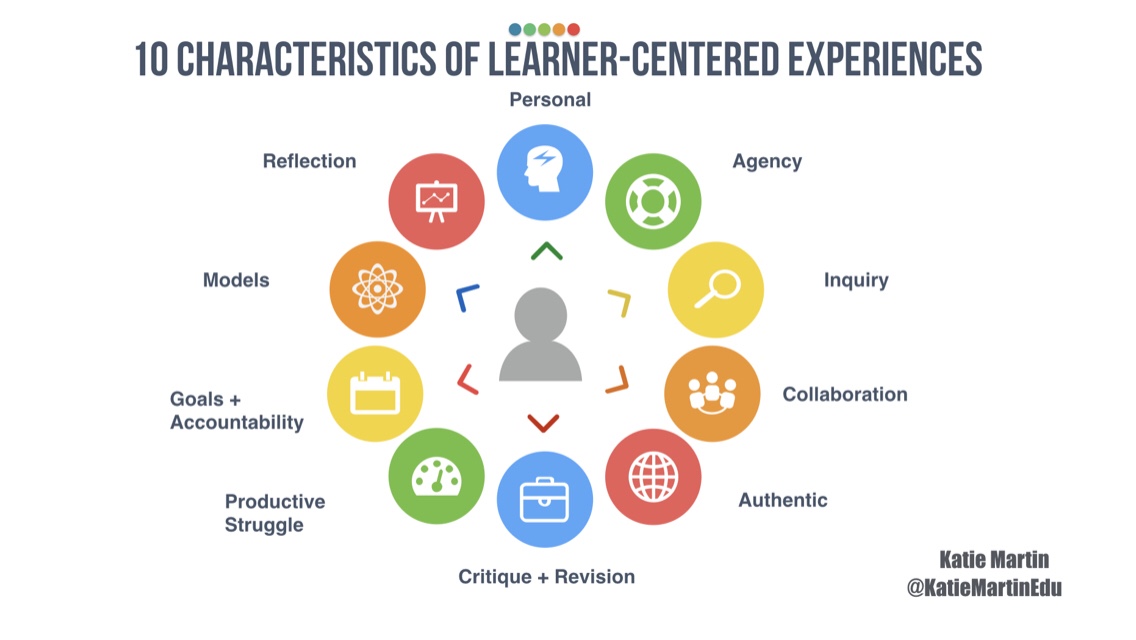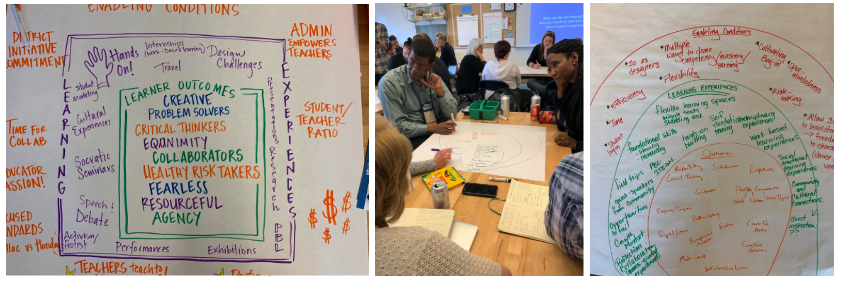As the world continues to evolve and change in dynamic ways, there is an increasingly urgent call to create schools that meet the needs of learners in our world today to equip them with the academic and social skills that are critical for success in work, life, and citizenship. Many educators recognize the diverse strengths and challenges that children come to school with and understand that to truly develop and grow unique individuals we cannot teach in a standardized way.
Jeff Bezos, CEO of Amazon, a company that has continuously evolved to meet the needs of consumers argues that obsessive customer focus is the key to keeping Amazon innovative. This focus keeps them continually looking to create new and better models to meet the customers’ needs. I know that schools are not companies, but there are always things that we can learn from others in industry and education and it makes me wonder,
What if we were obsessively learner-centered in schools?
To answer this question, my colleague Devin Vodicka and I have had the opportunity to work with educators around the country to talk about how we might redesign our systems to be more learner-centered.
One of the first questions we ask is:
What are the knowledge, skills, and dispositions that you believe are critical for learners to develop?
Time and time again, educators say problem-solving, critical thinking, empathy, creativity, agency, and perseverance to name a few. We are always encouraged when we hear these goals. They also mirror the learner outcomes aligned to our Impact framework at AltSchool, a holistic, set of measures that better reflect knowledge, skills, habits, that best prepare learners for their future.

Too often we focus on test scores, curriculum, programs, or even technology, but when we stay focused on the learners, all of these tools and measurements become secondary—part of what we do but not why we do it. We can have the latest technology or the best curriculum, but if we are not obsessed with who learners are, how to best serve them, and how to partner with them to move forward, we can fail to make the impact that we desire and are working so hard to achieve.
Next, if we begin with what we want learners to know and do, we then think about:
What are the learning experiences that are critical for learners to develop these desired competencies?
Educators often identify authentic, personal, hands-on learning experiences that align with 10 characteristics of learner-centered experiences.

The power is when educators provide choice for learners and opportunities for them to manage, construct, and drive their own learning to achieve the learning goals and make new meaning. I would argue, even more importantly, they learn to engage in authentic problem solving that will allow them to be active and contributing members of society now and in the future, not simply get through the curriculum or the latest initiative or program.
Despite our desire and innate understanding f what powerful learning looks like and feels like, our current system was designed for a different era with different goals. Authentic learning experiences that develop the skills, passions, and mindsets of the whole child are often at odds with our policies, curricula, schedules, and assessment practices in many schools and districts.
As we reimagine our systems, the final question we ask educators to think about is:
What are the enabling conditions that are critical to developing the
desired learner outcomes?
No surprise here: Educators need time, trust, a culture of risk-taking, support, resources, and models. Part of being learner obsessed is ensuring that the teachers have time, support, and trust to do what is best for learners in their classrooms and throughout the school. As a great number of demands are placed on teachers, teacher retention and burnout is increasing, and the revolving door, in many cases, negatively impacts the schools and their students. Not surprisingly, teachers leave schools where they are not supported or valued or feel ill-equipped or unable to meet students’ needs. We can prevent this by looking for ways to create conditions that empower all learners and inspire leaders rather than demand followers.
Here are some of my favorite examples of how educators we worked with are reimagining the education system to be more learner-centered. This is an easy activity to do and I would highly recommend doing this with your staff and discuss what is working well and some idea for how you might reimagine some of your practices and policies to be more learner-centered.

Onward
As I have have been thinking a lot about the purpose of school, I also think a lot about how to change it. It seems daunting and there are so many systems that are barriers to the questions above but I also know that the education system was designed by people and the only way it will change is the people. Thoughtful leaders (in 1892) created the rules and the systems that made sense for the world then and the only way it will change is by people who believe in themselves and our collective future enough to make the changes that are necessary today. That means you are part of the solution.
It only takes one person to take small steps that can lead to big change and I for one am encouraged and hopeful that together, we can create that movement. If we want something better for the future, we have to create it. This doesn’t mean we ignore the past, but it also means that we don’t simply recreate the experiences we had as students for our own children. They live in a different time, with exponential opportunities. Opportunities that did not exist when we were children and we would be remiss to allow our apprehensions to hold back their aspirations.


Very thought provoking Katie with key areas that cannot be dismissed. Also need to remember that we only get one chance to be a kid, would also like to see excitement, fun, friendship, serendipity, structured and unstructured inquiry etc. added into to mix
I enjoyed reading about learner-centered practices in schools. I especially liked the visual. My dissertation research highlighted the impact of both inquiry and collaborative student conversations as instructional strategies to support positive literacy outcomes.
I would be very interested in doing this in our school to discuss how we might reimagine practices and policies – can i ask, what questions did you use to walk them through this activity? Thanks!